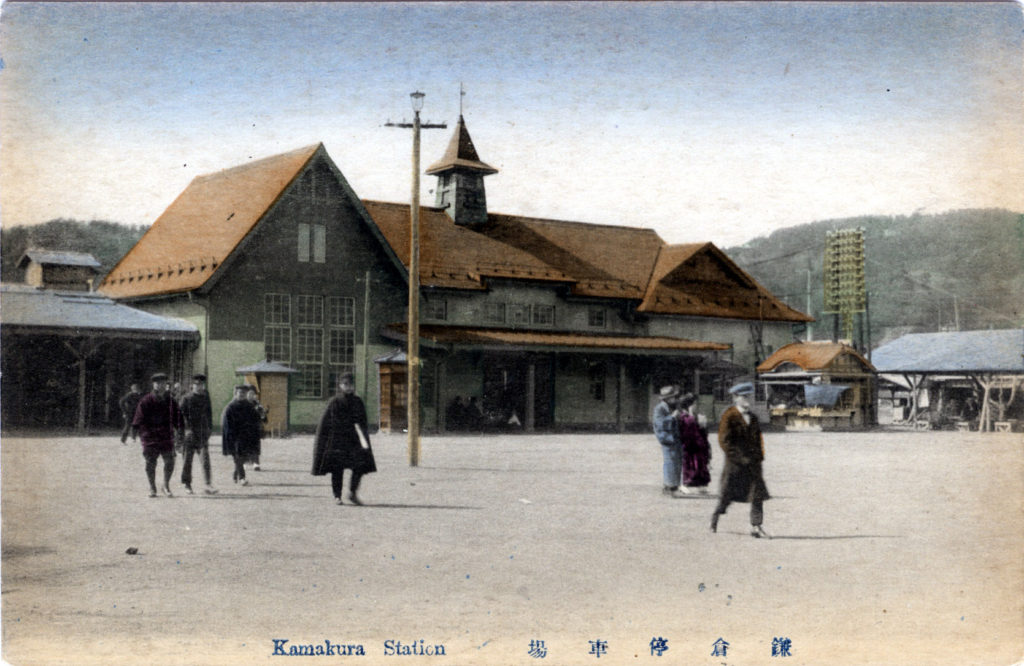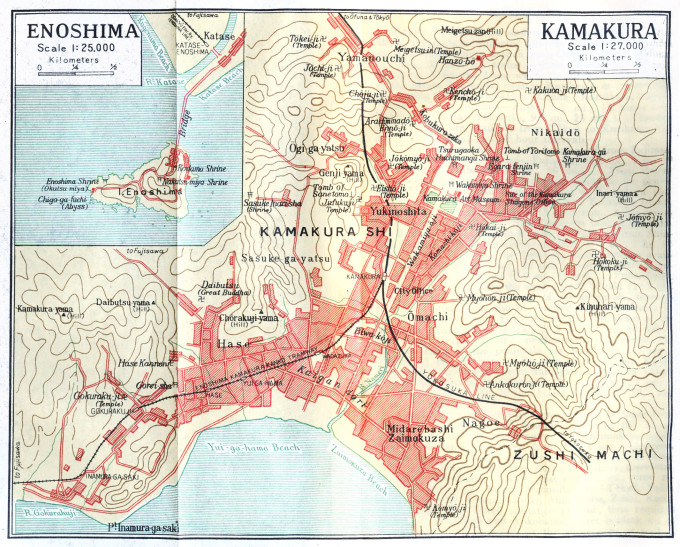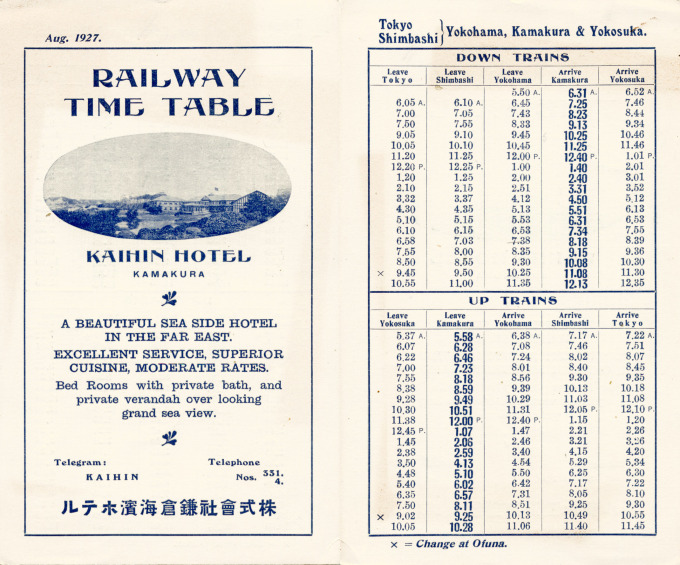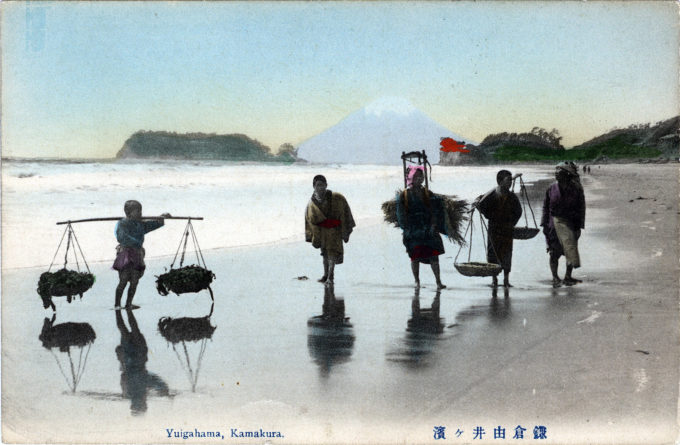See also:
Yokosuka Naval Arsenal, c. 1910.
The “Great White Fleet” at Yokohama, 1908
Daibutsu at Kamakura, c. 1910
Yuigihama Beach, Kamakura, c. 1910
“The Yokosuka Line was constructed in response to the request to the Cabinet by the Navy and the Army, dated June 22, 1886, citing the lack of ground transportation to Yokosuka, one of the most important military bases in the country. On April 22, 1887 the Cabinet ordered the Government Railways to build the line with the budget diverted from the fund for the Tōkaidō Line construction.
Map: Kamakura and Enoshima (inset), showing the Imperial Government Railways’ Yokosuka Line and the privately-owned Enoshima-Kamakura tramline (Enoden). (Source: Japan: The Official Guide, 1952.)
“After the survey from July to December 1887, the construction of the railway between Ōfuna and Yokosuka (with intermediate stations at Kamakura and Zushi) started in January 1888 and completed in June 1889 spending 408,480 yen in total. The operation of the line started on June 16, 1889.
“Kamakura Station opened on 16 June 1889 as a station on a spur line from Ōfuna on the Imperial Government Railways (IGR), the pre-war predecessor to the Japan National Railways (JNR), to serve the Yokosuka Naval Arsenal and related Imperial Japanese Navy facilities at Yokosuka. This line was renamed the Yokosuka Line in October 1909. The terminus of the Enoshima Electric Railway (Enoden) was relocated to Kamakura Station on 1 March 1949. The station building was rebuilt in October 1984.”
– Wikipedia
“In 1890 the railroad, which before then had not come nearer than Ofuna – the junction upon the main line four miles distant – directly linked Kamakura with the capital, this fact being naturally conducive to a new era of prosperity.
“Since that time the ‘besso’ (seaside villas) of residents of Tokyo and Yokohama have increased and multiplied apace – Yuigahama gaining wide celebrity as a bathing resort and acquiring a high degree of popularity with the swarms of summer visitors, who transform the beach into a scene of liveliest animation.”
– Kamakura: Fact and Legend, Iso Mutsu, 1918
“Each day of our visit, Japan’s hospitality arranged for excursion parties to interesting Kamakura. Leaving the pier at which we had landed from the Vermont, the pretty tea girls with the Welcome cakes greeted us near the station, and amid the cheering Banzais our train left as usual.
“Along the route the children were again massed at the stations, each bearing our flag and that of Japan, and with their buzzing Banzai greeting us. The train passed through mile after mile of lovely gardens in which the gorgeous kimonos and glittering adornments of the women showed to advantage. We entered a tunnel and, emerging on the opposite side, passed through a beautiful valley with gently sloping hills covered with foliage of rarest beauty, lending enchantment to the scene and reminding us of similar valleys in California where we had spent many happy days.
“Arriving at Kamakura Station, we were met by the residents and the school children, all crying Banzai, and later learned that many of these children had walked from fifteen to twenty five miles to see Uncle Sam’s sailors and bid them Banzai.”
– Around the World with the Battleships, by Roman John Miller, 1909





